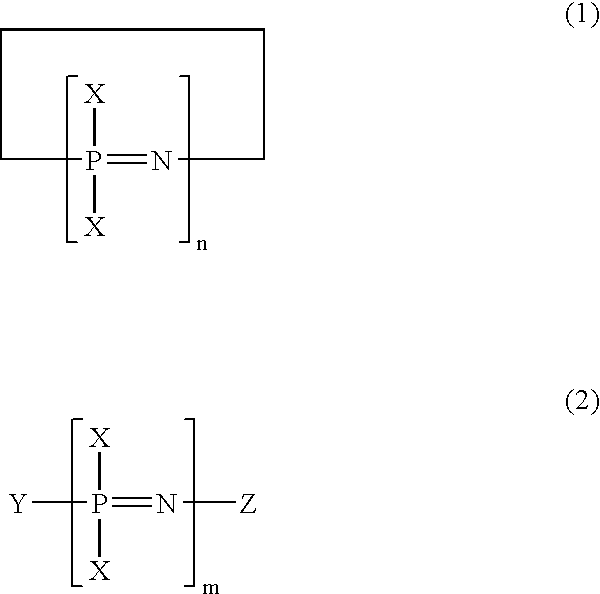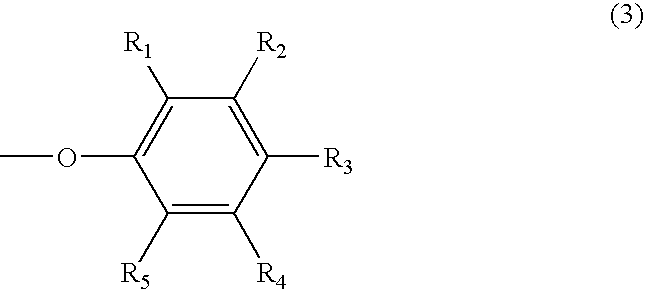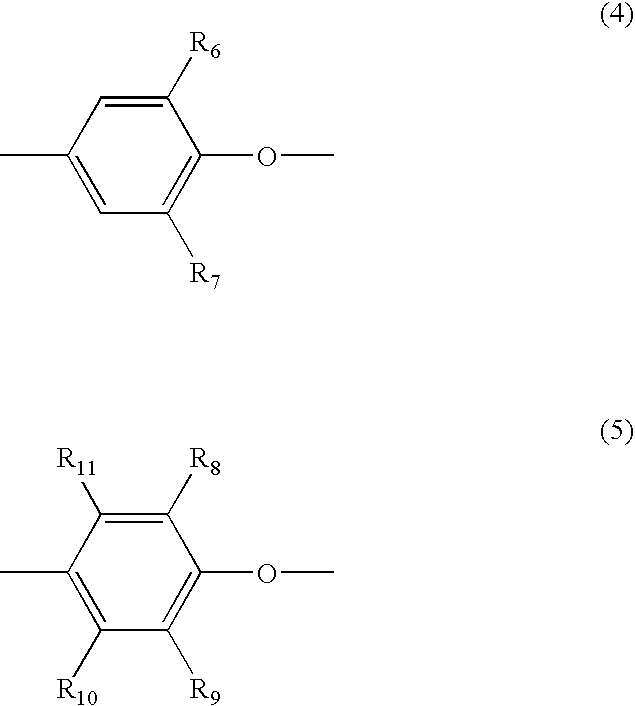Flame retardant composition
- Summary
- Abstract
- Description
- Claims
- Application Information
AI Technical Summary
Benefits of technology
Problems solved by technology
Method used
Image
Examples
examples
[0077] The flame retardant composition will be explained in detail by the following examples, but the present invention shall not be limited to these examples. Moreover, the method of preparing the composition is not particularly limited as long as various materials can be uniformly mixed by the method. In addition, % represents % by weight unless otherwise specified.
1) Determination of Number Average Molecular Weight
[0078] The number average molecular weight was determined using the gel permeation chromatography system “SHODEX GPC System 21” manufactured by Showa Denko K. K., a column in which K-800D-K805L-K805L are connected in series, and a UV detector, and flowing a chloroform solution of 1.0 ml / min at 40° C. A calibration curve was prepared by using standard polystyrenes having molecular weights of 550, 1,300, 2,960, 9,680, 28,600, 65,900 and 172,000. The detected wavelength for preparing the calibration curve was 254 nm, and the wavelength for determining polyphenylene ethe...
examples 1-4
[0106] AER 250, PPE-1 and FR-1 each in an amount as shown in Table 1 were mixed with methyl ethyl ketone, and were uniformly dissolved therein by stirring the mixtures for 30 minutes in an oil bath heated to 130° C. The mixtures were further heated in the oil bath of 130° C. for 2 hours to remove methyl ethyl ketone. Then, the resulting mixtures were vacuum dried at 1 mm Hg or less for 2 hours in a vacuum dryer set at a temperature of 140° C. to completely remove methyl ethyl ketone. The resulting mixtures were maintained at 110° C., to which the hardner (A) was added.
[0107] The mixtures with the hardner (A) were heated for 60 seconds while being stirred and then cast into a mold.
[0108] The mixtures in the mold were then cured in a hot press at 100° C., 0 kgf / cm2 for 2 minutes, 100° C. / 10 kgf / cm2 for 2 minutes and 100° C. / 40 kgf / cm2 for 10 minutes. The cured mixtures were removed from the mold and were finally post-cured at 120° C. for 2 hours to obtain molded test pieces. The mol...
examples 5-8
[0113] AER 250, PPE-2 and FR-1 each in an amount as shown in Table 3 were mixed with methyl ethyl ketone, and were uniformly dissolved therein by stirring the mixture for 30 minutes in an oil bath heated to 130° C. The mixtures were further heated in the oil bath of 130° C. for 2 hours to remove methyl ethyl ketone. Then, the resulting mixtures were vacuum dried at 1 mm Hg or less for 2 hours in a vacuum dryer set at a temperature of 140° C. to completely remove methyl ethyl ketone. The resulting mixtures were maintained at 110° C., to which the hardner (A) was added. The mixtures with the hardner (A) were heated for 60 seconds while being stirred and then cast into a mold.
[0114] The mixtures in the mold were then cured in a hot press at 150° C., 0 kgf / cm2 for 1 minute, 150° C. / 10 kgf / cm2 for 2 minutes and 150° C. / 40 kgf / cm2 for 10 minutes. The cured mixtures were removed from the mold and were post-cured at 120° C. for 2 hours to obtain molded test pieces. The molded test pieces w...
PUM
| Property | Measurement | Unit |
|---|---|---|
| Percent by mass | aaaaa | aaaaa |
| Percent by mass | aaaaa | aaaaa |
| Percent by mass | aaaaa | aaaaa |
Abstract
Description
Claims
Application Information
 Login to View More
Login to View More - R&D
- Intellectual Property
- Life Sciences
- Materials
- Tech Scout
- Unparalleled Data Quality
- Higher Quality Content
- 60% Fewer Hallucinations
Browse by: Latest US Patents, China's latest patents, Technical Efficacy Thesaurus, Application Domain, Technology Topic, Popular Technical Reports.
© 2025 PatSnap. All rights reserved.Legal|Privacy policy|Modern Slavery Act Transparency Statement|Sitemap|About US| Contact US: help@patsnap.com



